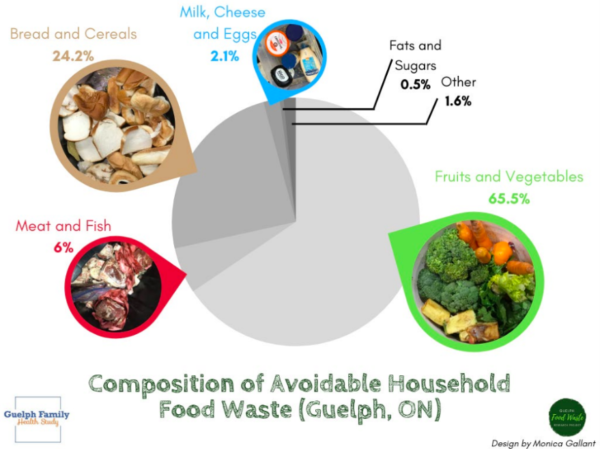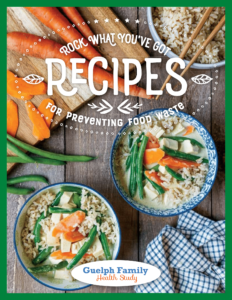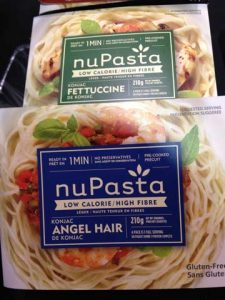
Sue Mah with Nutrition Connection Forum speakers Dr. Fiona Yeudall and Dr. Cecilia Rocha. Image source: Lucia Weiler
Hosted by Nutrition Connections, this year’s annual forum explored the shifts that will be required in eating habits and food choices in order to benefit the health of current and future generations as well as the health of the planet. Here’s our summary of a few of the presentations.
What is Sustainable Eating? – Dr. Cecilia Rocha
Dr. Rocha is a member of the International Panel of Experts on Sustainable Food Systems, a Professor in the School of Nutrition and a researcher at the Centre for Studies in Food Security at Ryerson University.
Sustainable diets, defined by the Food and Agriculture Organization (FAO) of the United Nations are: those diets with low environmental impacts which contribute to food and nutrition security and to healthy life for present and future generations. Sustainable diets are protective and respectful of biodiversity and ecosystems, culturally acceptable, accessible, economically fair and affordable; nutritionally adequate, safe and healthy; while optimizing natural and human resources.
Rocha reminded us of the 17 sustainable goals proposed by the United Nations, in particular, goal #12 which focuses on responsible consumption and production. Consumers have the potential to be agents of change through their healthy and ethical choices of what to eat. Through responsible consumption, ordinary people can effect change by carefully selecting the products they buy. However, price, convenience and brand familiarity are often the most important decision for most consumers, rather than fairness, sustainability and health.
In a world in which food is mostly a commodity, bought and sold through markets, how do we make the transition from unsustainable and unhealthy food systems to sustainable diets? Can consumers, through their choices of what food to buy, lead the way to that transformation? Rocha further posed this thought-provoking question: Is it realistic or reasonable to put this heroic task on the shoulders of consumers?
Rocha acknowledged that alternative food markets such as Community-Supported Agriculture (CDA), famers’ markets and fair-trade may offer consumers a more sustainable, healthy and ethical model of food production and consumption. Her opinion is that these alternative markets are still viewed as niche and alone, aren’t the answer. Rocha suggested that public policy is needed in at least three areas to facilitate responsible consumption:
– taxes and regulation (e.g. on sugar-sweetened beverages, use of chemicals, ultra-processed foods, and advertising)
– subsidies (e.g. for ecologically-friendly processes and alternative markets)
– information, education and nudging (e.g. food-based dietary guidelines).
How Do Our Eating Habits Compare to Canada’s Food Guide? – Dr. Rachel Prowse
Dr. Prowse, Applied Public Health Science Specialist at Public Health Ontario, compared the recommended proportions of food (by weight) in the new Canada’s Food Guide versus Ontario adults’ intakes from the 2015 Canadian Community Health Survey – Nutrition Public Use Microdata File. Research results are expected to be published next year, however preliminary findings show that we’re not eating according to the recommended proportions of the food guide. Dr. Prowse suggests that non whole grains and “Other foods” (such as cookies, cakes, pastries, ice cream and confectionary) may be displacing nutritious foods on our plates. A consumer shift towards eating a more plant-based diet may help to drive the production of sustainable food options.
A Deep Dive into Food Waste – Dr. Kate Parizeau
As an Associate Professor at the University of Guelph, Dr. Parizeau researches the social context of waste and its management. Parizeau shared some staggering statistics:
– Canada generates 12.6 million tonnes of organic waste per year
– Canada wastes $49.5 billion of food annually – enough to feed every person living in Canada for almost 5 months.
In collaboration with the Guelph Family Health Study, Parizeau looked at food waste both at the household level. Household food waste was defined as either “avoidable” (food that could have been eaten such as whole fruits and vegetables, spoiled food, uneaten leftovers, food past it’s best before date as well as bought but forgotten food) versus “unavoidable” (such as egg shells, banana peels and meat bones).
The study found that about ¾ of the household food waste was avoidable. Most of the avoidable food waste (over 65%) came from fruits and vegetables, 24% from bread and cereals, 6% from meat and fish, and 2% from milk, cheese and eggs. Overall, this amounts to an average of $936 per year, over 175,000 calories thrown out and 1,196 kg of C02 emissions created.

Image source: Kate Parizeau
Food literacy skills can result in reduced food waste. Behaviours such as meal planning, shopping with a list, food preparation, storing food safely and cooking at home are encouraged. A new cookbook Rock What You’ve Got – Recipes for Preventing Food Waste is now available for free download. This cookbook was created by the Guelph Food Waste Research Group in partnership with The Helderleigh Foundation, George Brown College’s Food Innovation and Research Studio (FIRSt).

 ICYMI, Jamie Oliver was in Toronto to launch his new TV show on Food Network Canada and his new cookbook Everyday Super Food. We were there at the TV show prescreening and had a chance to listen to Jamie’s thoughts on his latest cookbook.
ICYMI, Jamie Oliver was in Toronto to launch his new TV show on Food Network Canada and his new cookbook Everyday Super Food. We were there at the TV show prescreening and had a chance to listen to Jamie’s thoughts on his latest cookbook.
 Camelina Oil – Extracted from the Camelina sativa oilseed, camelina oil is about 90% unsaturated fat, with 39% omega-3 fat and 18% omega-6 fat. The oil boasts light, nutty and earthy notes. With a high smoke point of 475°F, camelina oil is versatile and can be used in salads, dips, dressings and marinades as well as cooking.
Camelina Oil – Extracted from the Camelina sativa oilseed, camelina oil is about 90% unsaturated fat, with 39% omega-3 fat and 18% omega-6 fat. The oil boasts light, nutty and earthy notes. With a high smoke point of 475°F, camelina oil is versatile and can be used in salads, dips, dressings and marinades as well as cooking. Nu Pasta – This gluten-free pasta is made from the konjac plant. It’s a type of tuber plant, which grows on slopes about 600 to 12,000 m above sea level. The root of the konjac plant is dried and milled into a fine flour which is the main ingredient of the pasta. A 210 g package contains: 25 calories, 1 g fat, 0 mg sodium, 6 g carbohydrates, o g sugar, 6 g fibre, and 1 g sugar. We sampled it in a stir-fry with garlic and pine nuts, which was a nice way to perk up the flavour.
Nu Pasta – This gluten-free pasta is made from the konjac plant. It’s a type of tuber plant, which grows on slopes about 600 to 12,000 m above sea level. The root of the konjac plant is dried and milled into a fine flour which is the main ingredient of the pasta. A 210 g package contains: 25 calories, 1 g fat, 0 mg sodium, 6 g carbohydrates, o g sugar, 6 g fibre, and 1 g sugar. We sampled it in a stir-fry with garlic and pine nuts, which was a nice way to perk up the flavour. Liquid Nitrogen Ice Cream – What do you get when you add milk, cream, sugar and -196°C liquid nitrogen? Ice cream, of course! It’s the coolest and coldest way to make ice cream, and it’s all ready in less than 60 seconds. Liquid nitrogen is simply the harmless nitrogen gas which has been cooled to such a low temperature that it becomes a liquid. We happily sampled the Pumpkin Spice Ice Cream – it was delicious!
Liquid Nitrogen Ice Cream – What do you get when you add milk, cream, sugar and -196°C liquid nitrogen? Ice cream, of course! It’s the coolest and coldest way to make ice cream, and it’s all ready in less than 60 seconds. Liquid nitrogen is simply the harmless nitrogen gas which has been cooled to such a low temperature that it becomes a liquid. We happily sampled the Pumpkin Spice Ice Cream – it was delicious! Greenwood, a senior scientist at Baycrest Centre Foundation, has been studying the link between diet and dementia for years. As Greenwood describes it, the brain “has a wonderful capacity to refresh, to renew and to repair itself and to create new brain cells and new connections throughout a person’s life.” The goal of this book is to inspire healthy lifestyle and eating habits to promote successful aging and prevent the degeneration of one’s cognitive function.
Greenwood, a senior scientist at Baycrest Centre Foundation, has been studying the link between diet and dementia for years. As Greenwood describes it, the brain “has a wonderful capacity to refresh, to renew and to repair itself and to create new brain cells and new connections throughout a person’s life.” The goal of this book is to inspire healthy lifestyle and eating habits to promote successful aging and prevent the degeneration of one’s cognitive function.